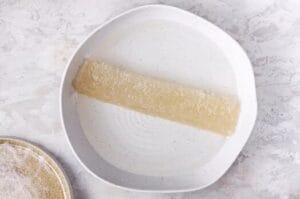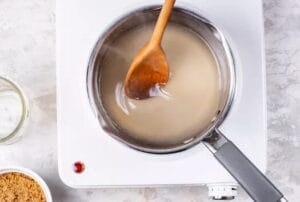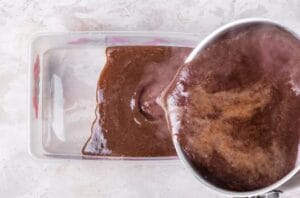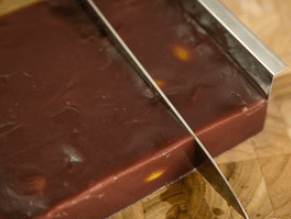Mizu Yokan – A Chilled Japanese Sweet to Beat the Summer Heat
As the summer sun beats down, I find myself craving chilled, refreshing desserts that can offer a moment of respite. One treat that always comes to mind is mizu yokan – a jelly-like confection made from sweet red bean paste and agar that melts in your mouth with the perfect balance of sweet and creamy.
I have fond childhood memories of visiting my grandmother in Japan during summer vacations and enjoying Japanese red bean jelly that she would prepare, the red beans studded with sweet chestnut pieces glistening like jewels. With the first silky, sweet bite, I would be transported to a blissful reverie.
Now when the temperatures climb, I yearn to recreate those halcyon moments. Making mizu yokan is a soothing ritual that reminds me of carefree afternoons spent on my grandmother’s engawa veranda, the old neighborhood cats purring at our feet as we savored her delectable creations.
Preparing the red bean jelly paste and watching it transform in the molds makes me feel connected to my heritage. And when I unmold the finished product, the jewel-toned squares flecked with chestnuts fill me with satisfaction and anticipation of enjoying these icy-cool treats on sweltering days.
I hope you’ll find as much joy in making jelly dessert as I do. This elegant yet humble confection is the perfect way to indulge your sweet tooth and give yourself a break, however brief, from the season’s oppressive heat. Stay cool, my friends.
Mizu Yokan Recipes
Mizu Yokan is a delicious sweet wagashi made with red bean paste, agar, and sugar. It is usually sold in blocks, but it is eaten in slices. There are two main types of ykan – neri ykan and mizu ykan. Niri ykan is sweeter than neri ykan, and it is eaten in the summer. It is best when made with a bit more water, as the fruit is very sweet.
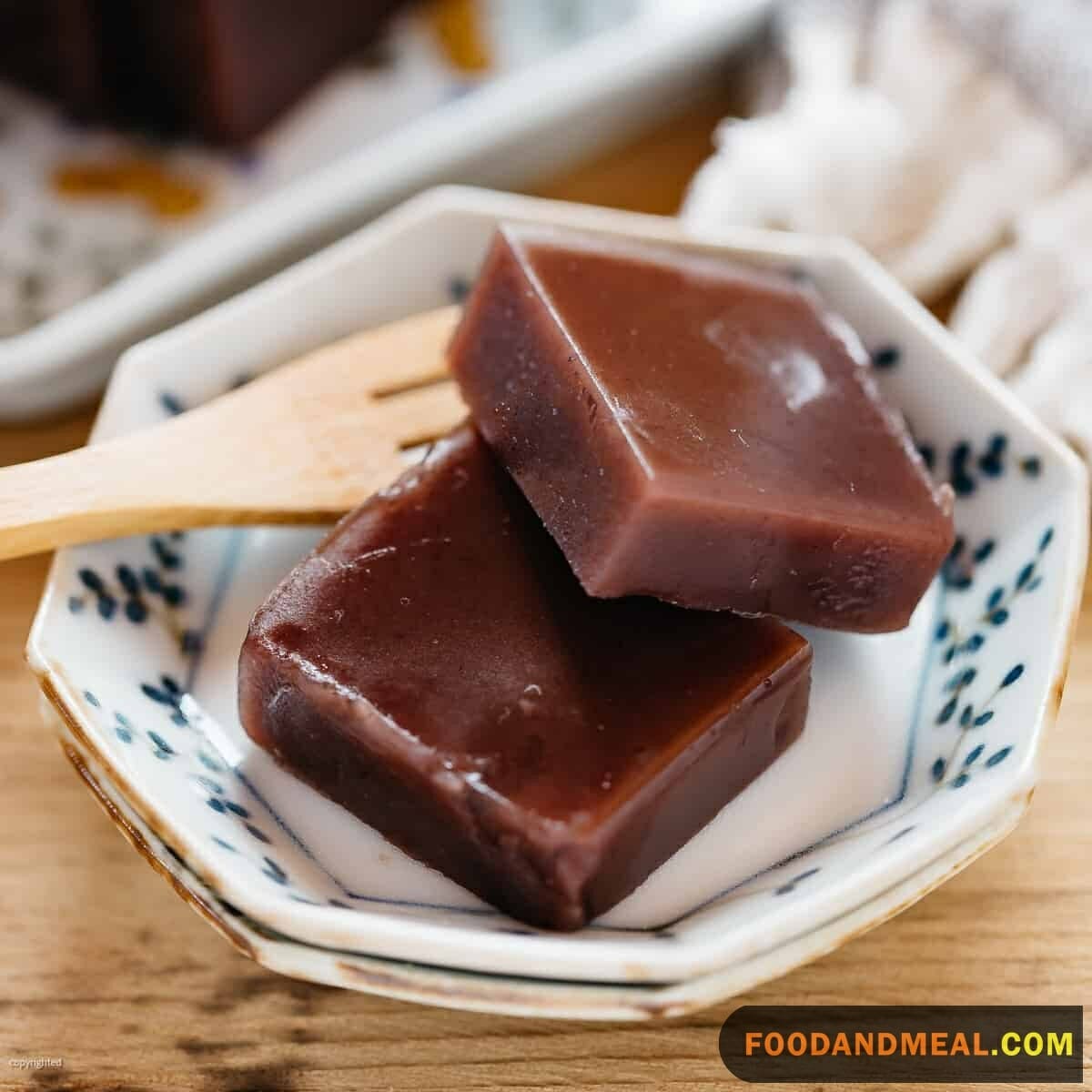

Japanese Mizu Yokan
Equipment
Instructions
- Soak the kanten in a bowl of water until softened.

- After an hour, remove the agar agar from water then squeeze it to remove any excess water.

- Use your hands to tear the agar agar into small bits.

- Add kanten pieces and one and quarter cup of water in a pan. Bring to boil while stirring occasionally.

- Simmer until the agar agar has dissolved in the water. Add brown sugar then stir thoroughly.

- Add the anko and continue to stir occasionally. Simmer the mixture until it thickens then remove from heat.

- Pour the anko mixture into a rectangle container (plastic). Allow to rest and cool then refrigerate for some Minutes.

- The mizu yokan is now firm. Use a knife to cut it into bite size cubes. Serve and enjoy.

Video
Notes
Nutrition
© Food And Meal
This website provides approximate nutrition information for convenience and as a courtesy only. Nutrition data is gathered primarily from the Spoonacular Database, whenever available, or otherwise other online calculators.
Making Mizu Yokan with a Steamer

I was excited to try making the silky smooth Mizu Yokan using my steamer instead of boiling on the stovetop. While the original recipe calls for cooking the sweet red bean and kanten mixture in a saucepan, I thought gently steaming it would create an even softer texture.
After mixing the ingredients together, I poured the red bean paste mixture into a heatproof container and placed it in my steamer basket. I was worried the steaming time might need to be adjusted but after patiently waiting the full 10 minutes, a toothpick inserted came out clean. I was overjoyed when I unmolded the dessert – it kept its shape beautifully yet had an incredibly velvety texture that just melts on the tongue.
While the stovetop method works well, I personally feel streaming allows better control over the texture. I’d definitely recommend it for achieving the smoothest, creamiest Mizu Yokan possible. This will be my go-to preparation method from now on!
Tips for Japanese red bean jelly
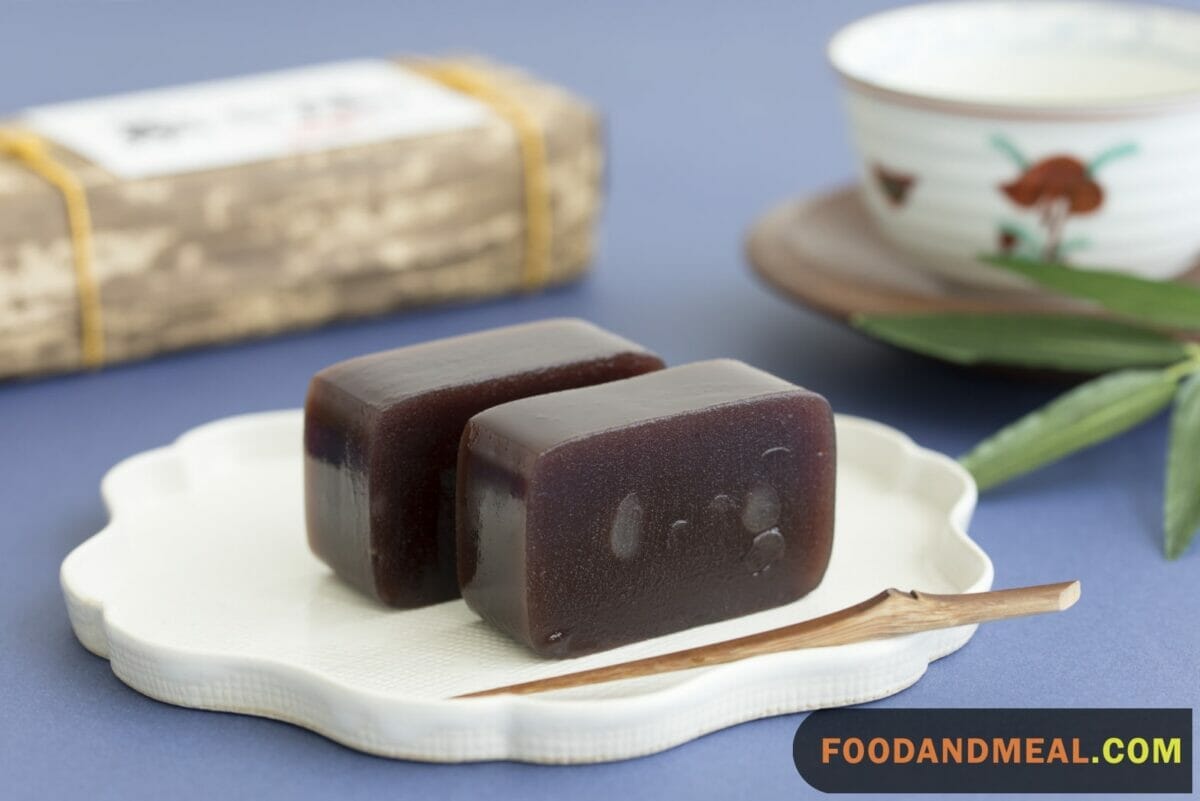
Cooking Tips
The process of dissolving agar-agar—a plant-based gelatin—into a sweet azuki bean mixture is one where you must surrender to the slow rhythm of stirring, allowing the ingredients to marry harmoniously. It’s important to feel the transformation, not just see it, as the liquid gradually thickens to the perfect consistency.
Embrace the simplicity of the ingredients and the purity of the flavors. There’s a subtle beauty in its modesty that speaks volumes about the Japanese aesthetic of wabi-sabi—the acceptance of transience and imperfection. When pouring the mixture into molds, do so with care, imagining the joy it will bring when set and ready to be shared.
Remember, mizu yokan is not just food; it’s a piece of art, a cultural whisper from Japan, and a testament to the elegance of minimalism. Each bite should evoke a sense of peace and contentment, a small celebration of the sweetness life offers in its understated moments.
Serving Suggestions about jelly dessert
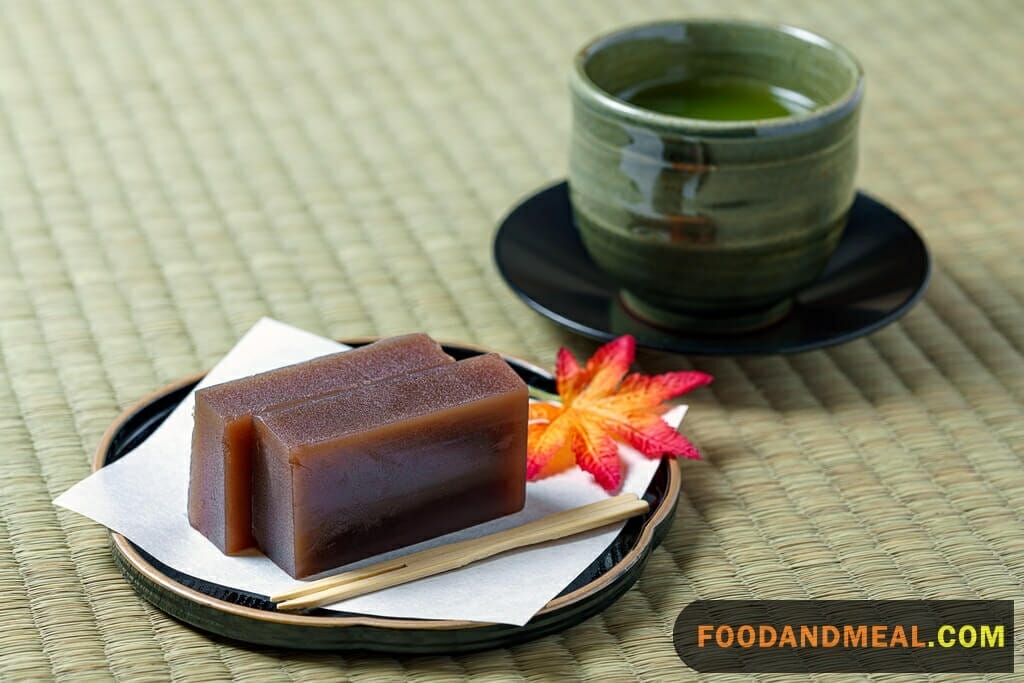
When considering serving suggestions for this jelly-like confection made from red bean paste, agar, and sugar, we should look for pairings that complement its subtle sweetness and smooth texture.
- An ideal accompaniment to mizu yokan could be Matcha Ice Cream. The slightly bitter and earthy notes of matcha balance the sweet, creamy flavor of the yokan. Additionally, the cold ice cream alongside the chilled yokan creates a delightful textural contrast.
- Another option might be to serve it with a cup of Soy Milk or Hemp Milk for those who prefer a plant-based pairing. These beverages have a mild flavor that would not overpower the yokan, and their creamy consistency goes well with the jelly’s softness.
- Alternatively, a more adventurous pairing could involve Sashimi. While not a conventional combination, the clean, umami-rich flavors of fresh sashimi can provide a savory counterpoint to the Japanese red bean jelly’s sweetness, offering a sophisticated and balanced culinary experience.
- For a tea pairing, consider serving the mizu yokan with a pot of lightly brewed Kukuri Bhindi, which is a type of Japanese green tea. Its refreshing taste and slight astringency can cleanse the palate and enhance the yokan’s flavor.
- Lastly, for a simple and traditional approach, enjoy the mizu yokan on its own or with a side of subtly sweetened, whipped Coconut Milk, which adds a tropical twist without overwhelming the yokan’s delicate flavor profile.
In summary, when serving mizu yokan, opt for complementary flavors that either enhance its sweetness or offer a contrasting taste or texture. Whether paired with other desserts, a soothing beverage, or even sashimi, red bean jelly can be a versatile component of a larger meal or stand alone as a light and satisfying treat.
Top 9 FAQs about Mizu Yokan

- Can I use canned red bean paste? Yes, you can use canned red bean paste for convenience. Just ensure it’s of good quality and free from any added flavors.
- Can I adjust the sweetness? Absolutely. This japanese dessert’s sweetness can be adjusted by varying the amount of sugar you add during preparation.
- How long can I store leftovers? You can store leftover Mizu Yokan in the refrigerator for 2-3 days. Keep it in an airtight container to maintain its freshness.
- Can I freeze Mizu Yokan? Freezing isn’t recommended as it can alter the texture. It’s best enjoyed fresh or refrigerated.
- Can I use other flavors besides red bean? Yes, you can experiment with other flavors such as chestnut, sweet potato, or even matcha for a unique twist on Mizu Yokan.
- What is Mizu Yokan in English? This read bean dessert, translated to English as “water yokan,” is a traditional Japanese sweet jelly dessert made with agar agar, sugar, and azuki bean paste. It has a delicate, translucent appearance and a smooth, sweet taste.
- What is the difference between yokan and Mizu Yokan? While both yokan and Mizu Yokan share a similar base of agar agar, sugar, and azuki bean paste, the key difference lies in the amount of water used. This Japanese Dessert has a higher water content, giving it a softer and more delicate texture compared to the denser, traditional yokan.
- What does yokan taste like? Yokan has a sweet and slightly chewy texture. The flavor is a harmonious blend of the natural sweetness from azuki beans and the added sugar. Mizu Yokan, with its higher water content, has a lighter and more refreshing taste compared to the denser traditional yokan.
- What does yokan mean in Japanese? Yokan (羊羹) is a traditional Japanese sweet or dessert. The term “yokan” is derived from the Chinese word “yougao,” meaning “thick jelly.” In Japanese cuisine, yokan refers to a variety of sweet jellies made with ingredients like agar agar, sugar, and azuki bean paste.
Conclution
I hope this post has inspired you to try making refreshing mizu yokan to find respite during the hot summer months. The elegantly simple ingredients come together to create a sublime chilled confection that transports you to a serene state with each velvety bite.
Be sure to visit Food And Meal at foodandmeal.com for more Japanese recipe inspirations to expand your culinary horizons. And let me know in the comments if you give mizu yokan a try – I’d love to hear how it turns out for you!
Stay cool, and happy cooking!
I'm James F Anderson, a noted sous chef from London and a Le Cordon Bleu alumnus. My career began in a Michelin-starred Parisian eatery, where my blend of classic and contemporary cooking, using seasonal ingredients, earned accolades. Recognized in culinary publications and on cooking shows, I’m committed to mentoring aspiring chefs and delivering memorable dining experiences, marking me as a standout talent in the culinary world.




